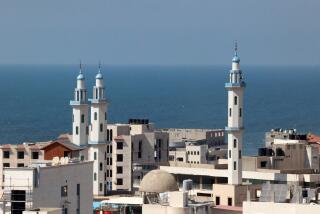Four books on Syria to help understand its troubled history
Books can start wars, or shape how they are fought.
Abraham Lincoln famously told Harriet Beecher Stowe that her book, “Uncle Tom’s Cabin,” started the Civil War. In the 1990s, two books helped inform the policies of President Clinton in the Balkans. Robert D. Kaplan’s “Balkan Ghosts: A Journey Through History” portrayed many centuries of irreconcilable ethnic enmity and gave the impression of a morass that would swallow up any country that intervened there; David Remnick of the New Yorker called it a “marvelous alibi for inaction.” But later Clinton read Noel Malcolm’s “Bosnia: A Short History,” which portrayed the conflict in that country as the product of the Machiavellian political calculations of Slobodan Milosevic. A more active U.S. role soon followed.
So what is one to read about Syria, the latest corner of the world to provoke debate about whether the United States should send missiles or troops to a distant land?
A plethora of books have been written about the Syrian revolution and the Assad regime in the last year. But over at World Literature Today, Nikolaos van Dam recommends a memoir by Hanna Mina, one of the few contemporary Syrian novelists whose works are available in English translation.
In the 2004 book “Fragments of Memory,” Mina describes “the hardly imaginable poverty in which he and his family had to live: under a fig tree, on a dusty roadside, constantly exposed to the sun and extreme hunger. Mina provides a dramatic, in-depth, insider’s view of the miserable, early-twentieth-century life of rural people living under feudal domination, almost as slaves, becoming indebted to their landlords,” Van Dam writes.
Several Syria observers also recommend Van Dam’s own book, “The Struggle for Power in Syria: Politics and Society Under Asad and the Ba’th Party,” published by I.B. Tauris, which recounts how the Assad dynasty (there are various spellings of the name in English) came to rule Syria and “keep the complex patchwork of minorities, factions and opponents securely under control” for half a century.
Current Syrian President Bashar Assad inherited leadership of the regime created by his father, the late Hafez Assad. The elder Assad is the subject of another, widely quoted book on Syria, by Patrick Seale, “Asad: The Struggle for the Middle East.” Originally published in 1989, by the University of California Press, Seale’s book is a more sympathetic portrait of the elder Assad, The Times wrote in a review. “Seale does not pretty up Asad’s struggle to the top, the brutal 1982 suppression of the Muslim-brethren uprising in Hama, or his willingness to use all the dirty tricks of the intelligence trade. To Seale, however, Asad is ruthless for raison d’etat. Seale’s portrait is that of a hard-eyed statesman surviving in a tough environment.”
University of Oklahoma professor Joshua M. Landis, a leading commentator on Syria, calls Seale’s book “the best and most readable overall book on modern Syrian history.” Landis places Seale’s book at the top of his own list of 27 favorite books about Syria, along with Van Dam’s book and Hanna Batatu’s “Syria’s Peasantry, the Descendants of Its Lesser Rural Notables, and Their Politics.”
“Batatu is a classic must read,” Landis writes. “It is full of fascinating detail about Alawites, Druze, and Syria’s many rural communities. Batatu goes far beyond the usual story to explain the success (and failures) of Asad’s rule.”
ALSO:
Boston marathon survivor Jeff Bauman to publish a book
J.D. Salinger: Glimpses of his hidden writing in new book
20 points that explain Amazon’s Tuesday announcements
More to Read
Sign up for our Book Club newsletter
Get the latest news, events and more from the Los Angeles Times Book Club, and help us get L.A. reading and talking.
You may occasionally receive promotional content from the Los Angeles Times.







